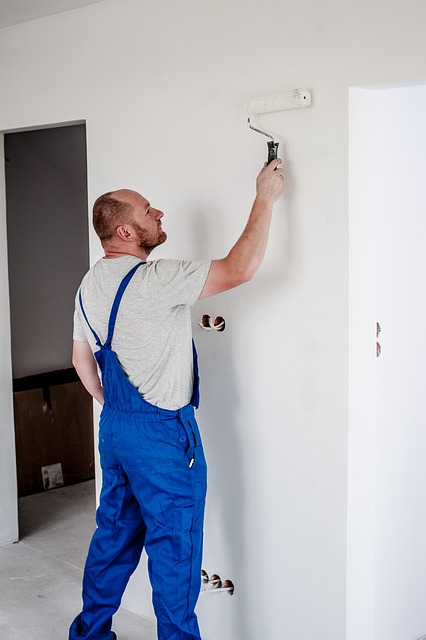Cleaning up after painting is the nightmare of every household. To put it more accurately, it’s the nightmare of every homemaker. The painting itself can take days, but if the painter isn’t that careful or skilled, for that matter, then cleaning up afterwards may even take you weeks.
In this article, we’ve gathered 6 tips from professional domestic cleaners to help you breeze through the process and have your space looking as good as new in no time. These tips are helpful for anyone, so give them a try and save yourself the hassle.
Protect Your Floors and Surfaces
As the first and most important step to easy cleanup after painting, it is highly recommended that you make sure everything in the room is covered before painting begins. You could take all unnecessary furniture out of the room as well. That way, they’ll be protected from unexpected splatters and damage.
Even if you’re a seasoned painter, accidents can happen, and spills and drips can occur. So, to prevent this, lay down drop cloths or plastic sheeting to protect everything that won’t be painted. You can also use painter’s tape to protect trim, windows, and other surrounding surfaces.
Remove Paint from Applicators
Paintbrushes and rollers should be cleaned immediately after the painting is done. It has to be done very thoroughly in order to keep them in good condition and use them in another painting session.
You can wash water-based paints very easily under running water. If there are stubborn spots on the bristles, then remove them with a scraper.
Oil-based paint can be removed with white spirit. You can pour it into a bowl and then soak the rollers and brushes. Wait a few minutes, then rinse with water.
In case you want to use your brushes later the same day, then just wrap them in cling film. Use a sealed plastic bag for the rollers.
Wait Until the Paint is Completely Dry
Before you begin cleaning up, it’s important to ensure that the paint is completely dry everywhere. This can take from a few hours to a few days, depending on the type of paint and the temperature and humidity in the room.
Trying to clean up before the paint is dry can result in smudges, streaks, and other damage to the paint job.
Remove All Drop Cloths and Tape
Once the paint is dry, it’s time to start removing all of the protective drop cloths and tape that you used to protect your floors, furniture, and trim. Start by carefully folding up the drop cloths, being sure to fold them inward to avoid spilling any paint that may have collected on them.
Then, carefully remove any tape, being sure to pull it away from the wall or trim at a 45-degree angle to avoid damaging your paint job.
Clean Up Any Spills or Splatters
Even with the best preparation and protective measures, it’s not uncommon to have some paint spills or splatters during a painting project. To clean these up, start by using a putty knife or scraper to gently scrape away any excess paint. Then, use a damp cloth or sponge to blot the area, being careful not to rub or smear the paint. If the paint has already dried, you can try using a razor blade or sandpaper to carefully scrape it away.
Removing Paint from Fabric
It’s highly advisable to wear old clothes and shoes during the painting process because the paint splashes are very difficult to remove from clothing. In case your clothes get stained, wait for the paint drops to dry and then clean them.
That way, you will prevent the paint from spreading and leaving a nasty stain you won’t be able to fully remove. When the stain is completely dry, you can remove it with warm water or rubbing alcohol.
The same goes for paint smudges on your carpet. Wait for them to dry, and then treat them.
Removing Paint from Windows
Paint on the window glass can be removed easily with a bladed scraper. After that, just wash and polish the glass. Professional domestic cleaners recommend waiting about 2 weeks before having thorough window cleaning. This is the approximate period in which the paint dries completely.
Any spots of paint on fixed fittings can usually be taken off by wiping them with a damp cloth. You can scrape the stubborn stains with a blunt knife, but be careful not to damage any delicate surface.
Removing Paint from Your Skin
If you have forgotten to wear gloves, your hands will probably be covered with paint as well. To get rid of the paint you can use water, alcohol, or nail polish remover.
There is another, more pleasant solution – special hand cleaners which are very helpful in cleaning the paint off your hands.
Dispose of Paint Properly
When it comes to disposing of paint, it’s essential to follow your local regulations. Some areas have specific guidelines for how to do it, so be sure to check with your local government or waste disposal facility. You can also ask in your hardware store for guidance on how to dispose of paint and paint-related materials in your area.
In general, it’s best to avoid pouring leftover paint down the drain or throwing it in the trash. Instead, you can try to donate it to a local community organisation or use it for a small touch-up project in the future.
If you still must dispose of paint, you can try drying it out first by leaving the can open and letting it sit in a well-ventilated area until it’s completely dry.
In Conclusion
Cleaning up after a painting project may not be the most enjoyable task, but it’s crucial to ensure that your paint job looks its best and your home remains clean and tidy. Furthermore, if it’s done properly, then your equipment will be clean and ready for your next painting project. By following these pro tips, you can make the cleaning process quick and easy and get back to enjoying your newly painted room.






